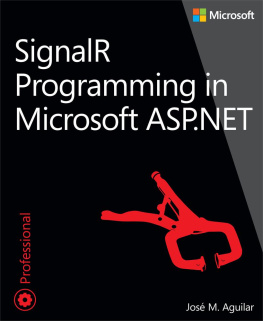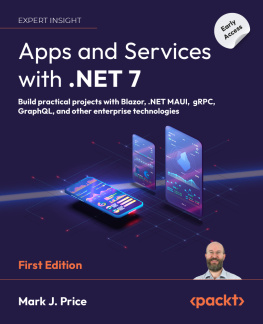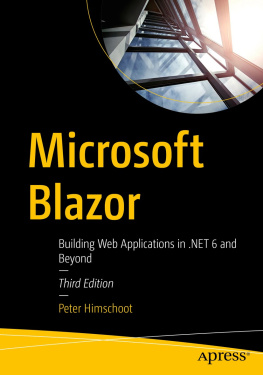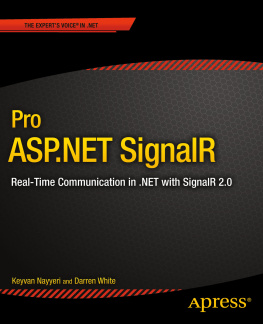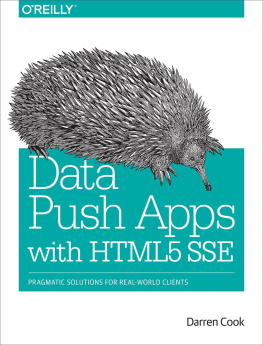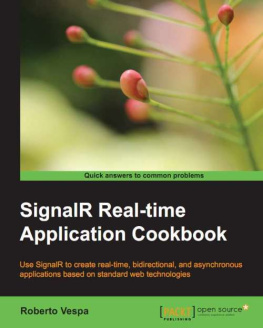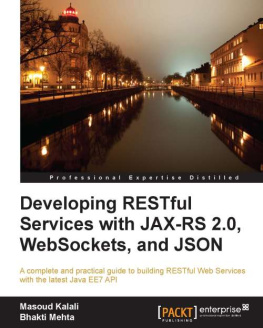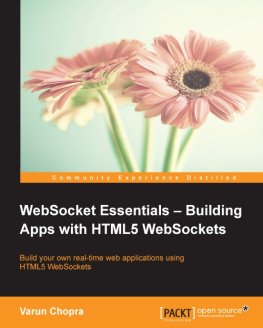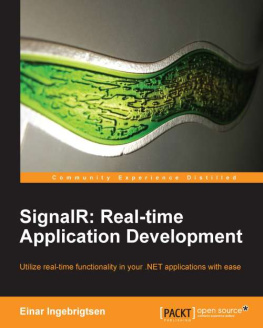Jose M. Aguilar - SignalR Programming in Microsoft ASP.NET
Here you can read online Jose M. Aguilar - SignalR Programming in Microsoft ASP.NET full text of the book (entire story) in english for free. Download pdf and epub, get meaning, cover and reviews about this ebook. year: 2014, publisher: Microsoft Press, genre: Computer. Description of the work, (preface) as well as reviews are available. Best literature library LitArk.com created for fans of good reading and offers a wide selection of genres:
Romance novel
Science fiction
Adventure
Detective
Science
History
Home and family
Prose
Art
Politics
Computer
Non-fiction
Religion
Business
Children
Humor
Choose a favorite category and find really read worthwhile books. Enjoy immersion in the world of imagination, feel the emotions of the characters or learn something new for yourself, make an fascinating discovery.
- Book:SignalR Programming in Microsoft ASP.NET
- Author:
- Publisher:Microsoft Press
- Genre:
- Year:2014
- Rating:3 / 5
- Favourites:Add to favourites
- Your mark:
SignalR Programming in Microsoft ASP.NET: summary, description and annotation
We offer to read an annotation, description, summary or preface (depends on what the author of the book "SignalR Programming in Microsoft ASP.NET" wrote himself). If you haven't found the necessary information about the book — write in the comments, we will try to find it.
- Topics include: Introduction to async development HTTP and real-time communications SignalR technology fundamentals persistent connections and hubs multiplatform real-time applications advanced topics
- Learn how SignalR uses Websockets when supported by the browser and the server and falls back to other techniques and technologies when it is not
- Use the simple ASP.NET API in SignalR for creating server-to-client remote procedure calls (RPC) that call javascript functions in client browsers from server-side .NET code.
- Exploit the API for connection management (e.g. connect and disconnect events), grouping connections, and authorization.
Jose M. Aguilar: author's other books
Who wrote SignalR Programming in Microsoft ASP.NET? Find out the surname, the name of the author of the book and a list of all author's works by series.

